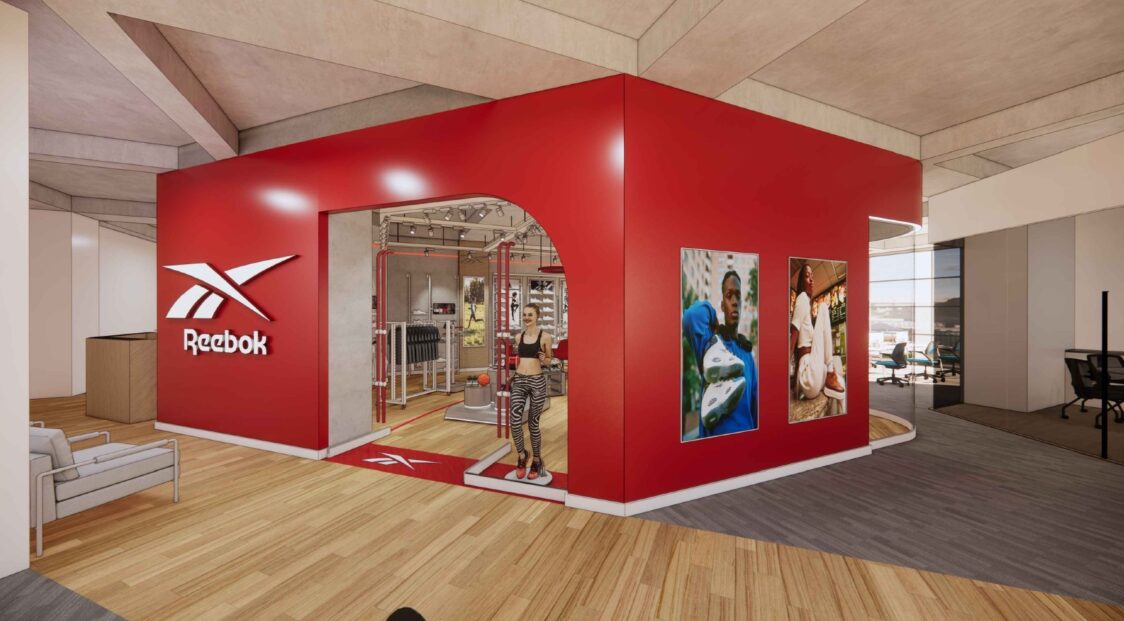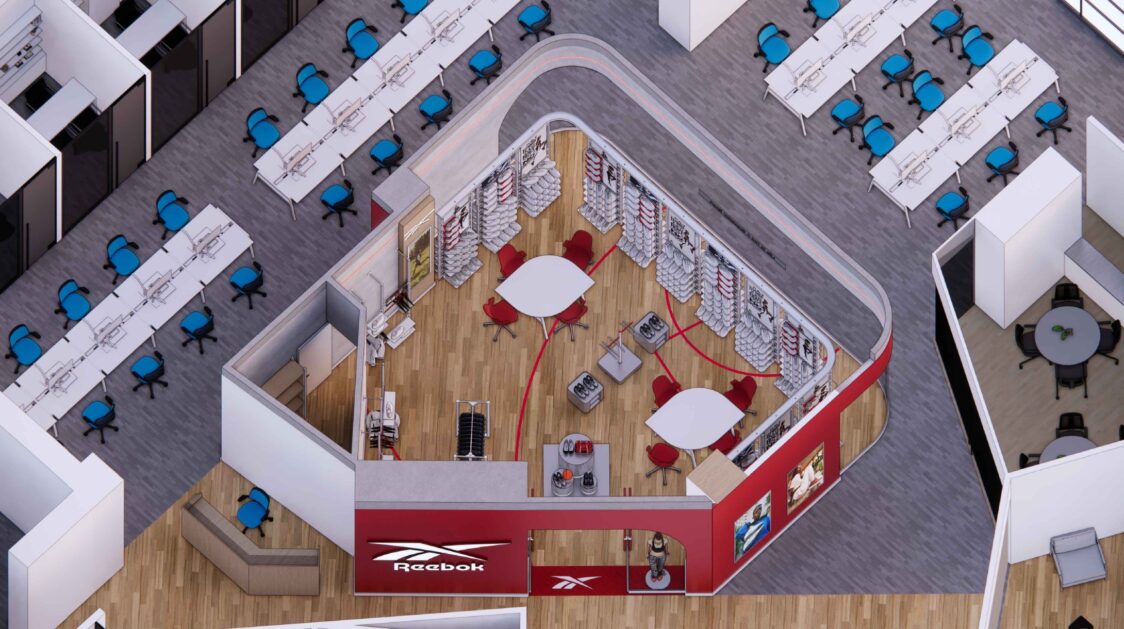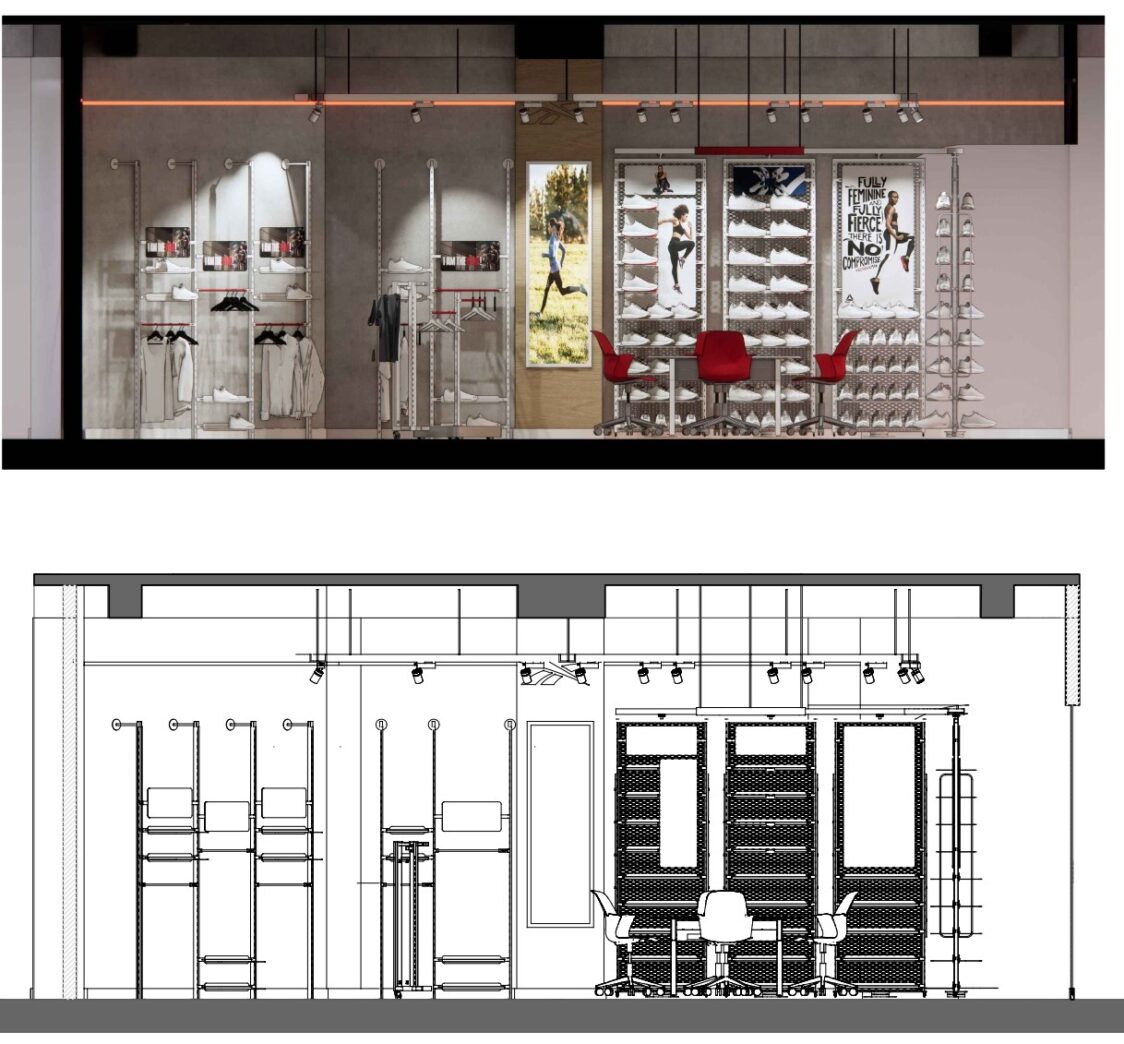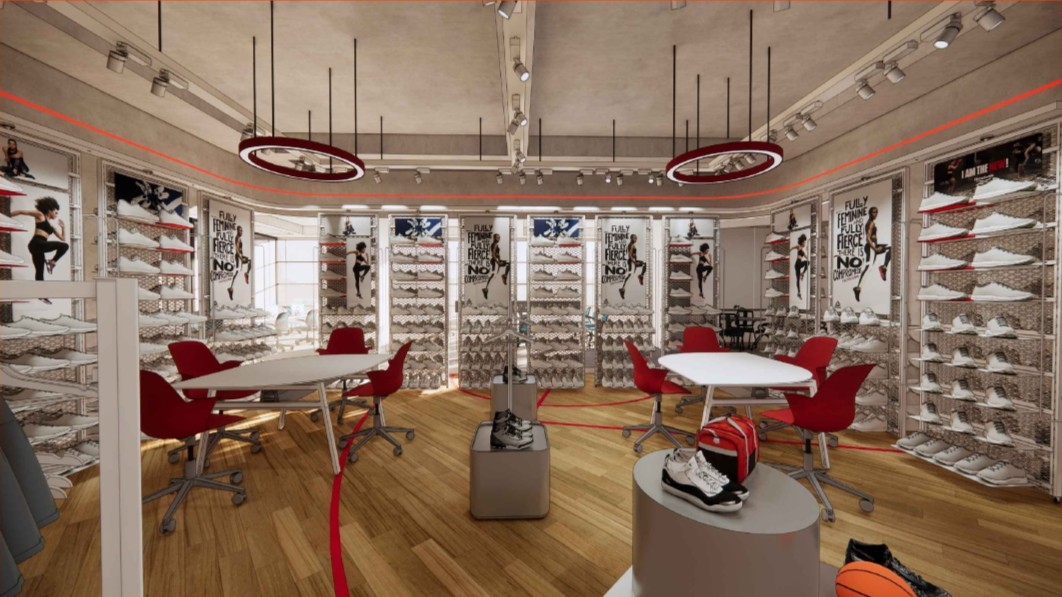


This showroom was conceived as a “circuit in motion” where walls, furniture, and signage trace a continuous narrative that invites visitors to explore the collection as if navigating a training track. Designed as a business-to-business (B2B) space, it exclusively serves corporate clients and wholesalers who visit to preview and pre-order the following year’s collection; therefore, it is not open to the general public. This anticipatory commercial function demands a highly flexible layout that allows quick reconfigurations between campaigns without compromising formal coherence.
The outer perimeter — a corporate red prism with softly curved corners — defines and announces the space. The brand is strongly leaning into an aesthetic that echoes basketball court lines, which are drawn across the floor as an orientation graphic.
Located within a corporate floor shared by two companies — and home to Reebok’s main national office — the showroom emerged from a set of circulation lines that were later extruded to become an irregular, almost playful envelope. This form responds to the need to optimize internal flows between offices and commercial areas while maximizing exposure to natural light. A sun-path study determined which perimeter segments should be glazed and which required solid panels; however, retail typologies demand continuous vertical surfaces for product display. To resolve this apparent contradiction, we designed double-sided furniture: lightweight metal frames with white expanded mesh that both filter light through the glazed enclosure and support sneakers on both sides, creating a porous surface that maintains a sense of transparency without sacrificing display capacity.
The polygonal tables — mounted on mobile bases — allow for simultaneous negotiations and can be removed when the brand installs temporary B2B equipment for each new collection. Thus, only the perimeter wall fixtures remain as the backbone of the display, while the central furniture functions as a scenographic plug-in. Additionally, one of the walls was kept aligned with the existing reception desk — a fixed element that could not be relocated — ultimately defining the project’s western boundary.
